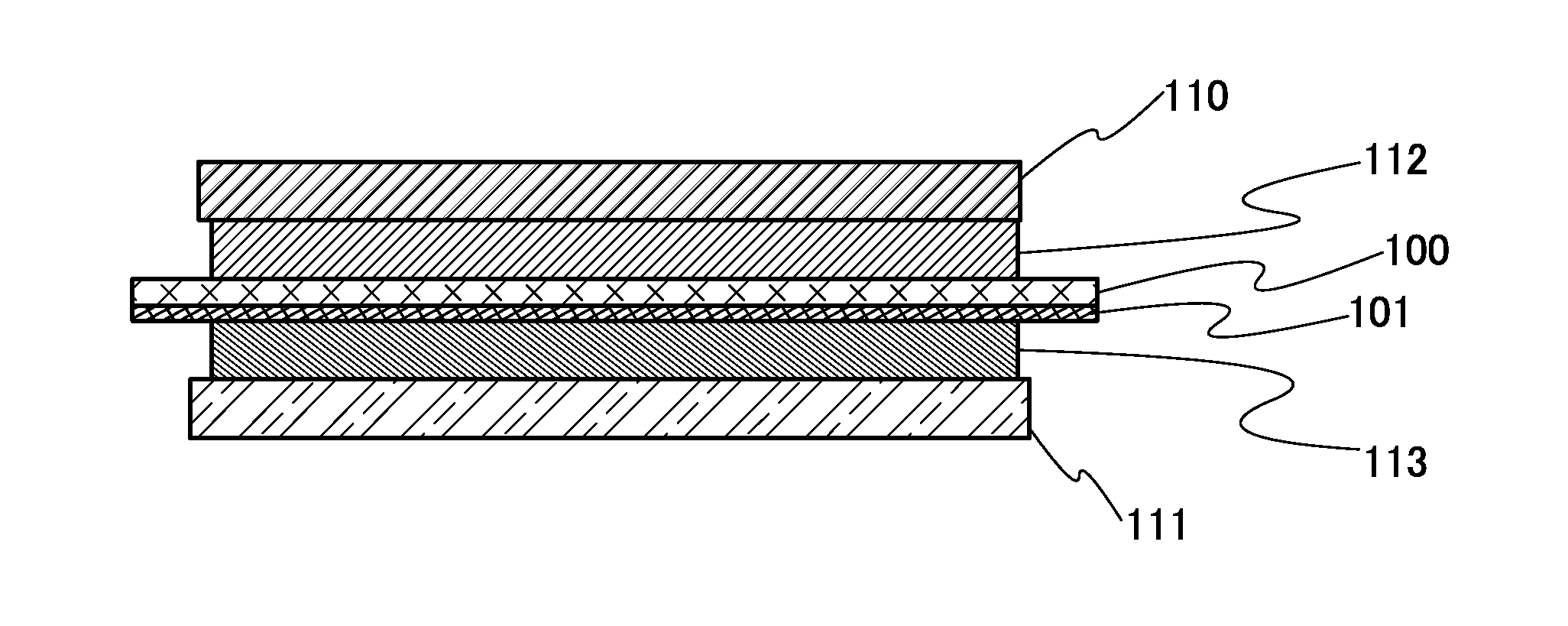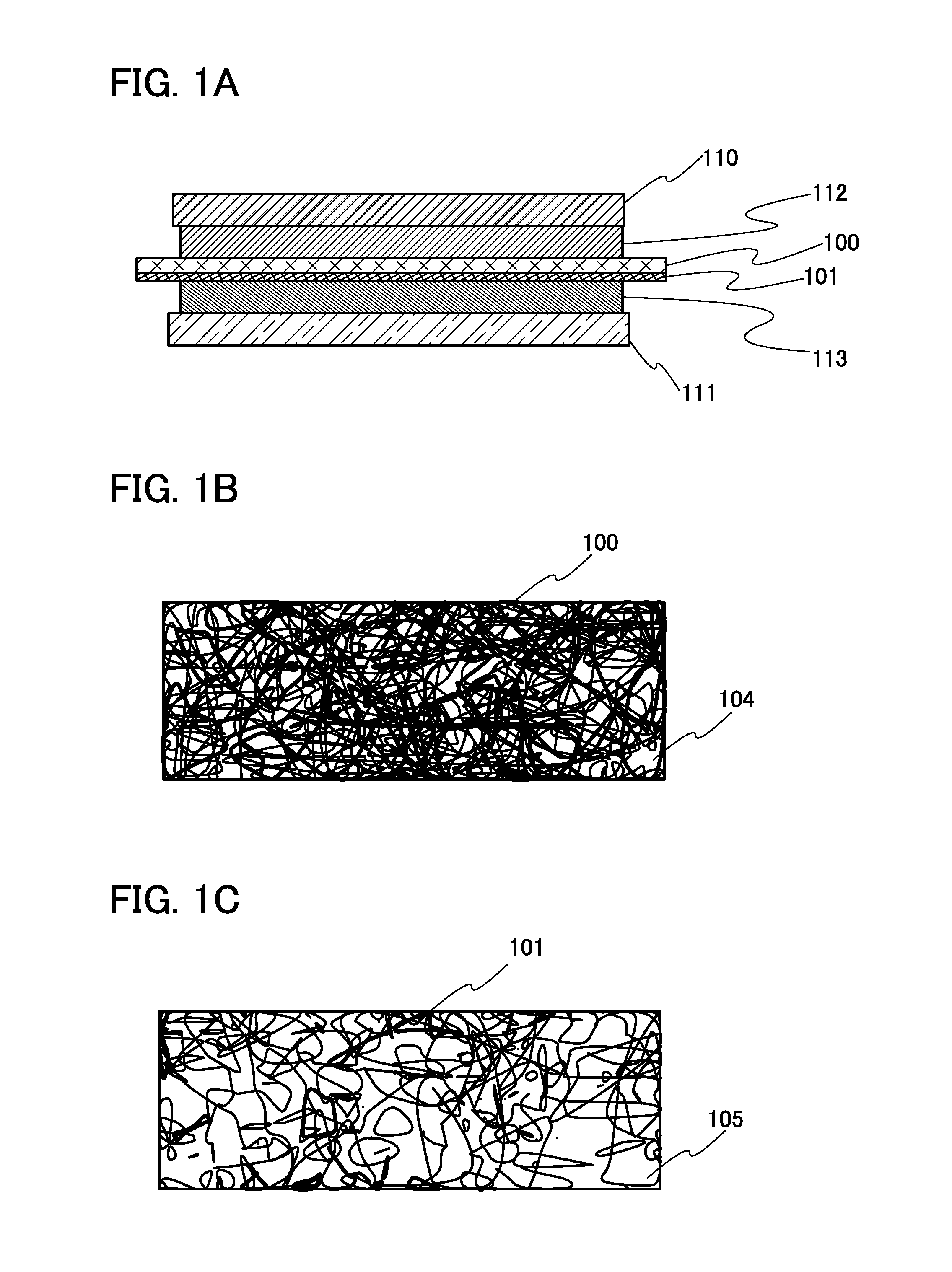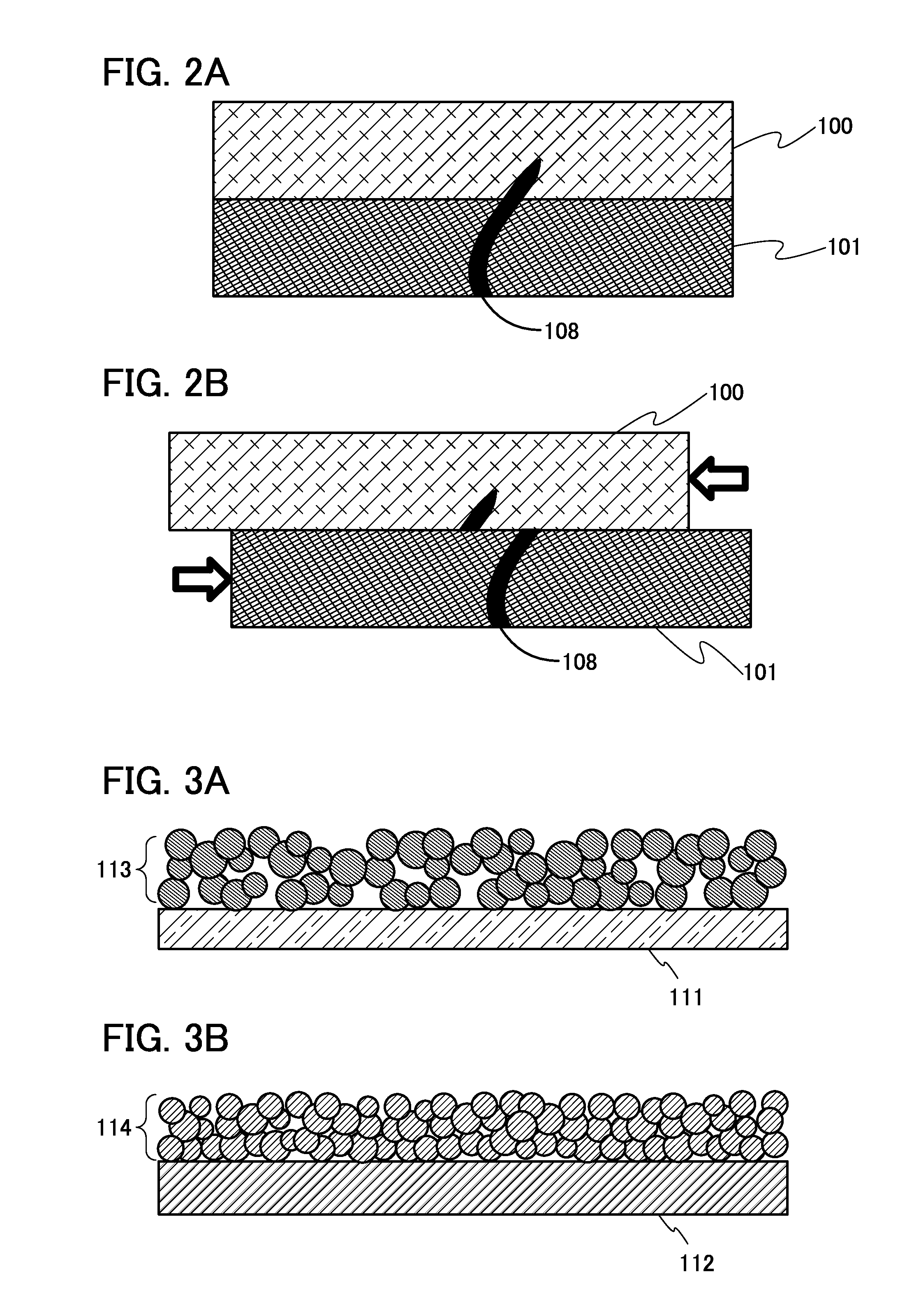Nonaqueous secondary battery
a secondary battery, non-aqueous technology, applied in the direction of batteries, cell components, cell component details, etc., can solve the problems of battery function impairment, safety hazards, self-discharge, etc., and achieve the effect of resisting change in shape, ionic conductivity and mechanical strength
- Summary
- Abstract
- Description
- Claims
- Application Information
AI Technical Summary
Benefits of technology
Problems solved by technology
Method used
Image
Examples
embodiment 1
[0065]Description is given below of a method for manufacturing a lithium-ion secondary battery of one embodiment of the present invention with reference to FIG. 1A. First, a cross-sectional schematic view of a stack of a positive electrode current collector 110, a positive electrode active material layer 112, a first separator 100, a second separator 101, a negative electrode active material layer 113, and a negative electrode current collector 111 is shown. Details of the current collector and the active material layer are described later. Note that the active material layer can be formed on both surfaces of the current collector, and the secondary battery can have a stacked-layer structure.
[0066]FIGS. 1B and 1C are enlarged cross-sectional schematic views of the first separator 100 and the second separator 101, respectively. The first separator 100 and the second separator 101 have a first pore 104 and a second pore 105, respectively. The size of the first pore 104 is different fr...
embodiment 2
[0125]In this embodiment, a method for manufacturing a lithium-ion secondary battery of one embodiment of the present invention is described below with reference to FIG. 4A. First, a cross-sectional schematic view of a stack of the positive electrode current collector 110, the positive electrode active material layer 112, the second separator 101, the first separator 100, a third separator 102, the negative electrode active material layer 113, and the negative electrode current collector 111 is shown. Note that the active material layer can be formed on both surfaces of the current collector, and the secondary battery can have a stacked-layer structure.
[0126]FIGS. 4B, 4C, and 4D are enlarged cross-sectional schematic views of the second separator 101, the first separator 100, and the third separator 102, respectively. The first separator 100, the second separator 101, and the third separator 102 have the first pore 104, the second pore 105, and a third pore 106, respectively. Note t...
embodiment 3
[0132]In this embodiment, structures of a secondary battery including the separator described in Embodiment 1 or Embodiment 2 are described with reference to FIGS. 5A to 5C, FIG. 6, and FIGS. 7A and 7B.
(Coin-Type Secondary Battery)
[0133]FIG. 5A is an external view of a coin-type (single-layer flat type) secondary battery. FIG. 5B is a cross-sectional view of the coin-type secondary battery.
[0134]In a coin-type secondary battery 300, a positive electrode can 301 doubling as a positive electrode terminal and a negative electrode can 302 doubling as a negative electrode terminal are insulated from each other and sealed by a gasket 303 made of, for example, polypropylene. A positive electrode 304 includes a positive electrode current collector 305 and a positive electrode active material layer 306 provided in contact with the positive electrode current collector 305. A negative electrode 307 includes a negative electrode current collector 308 and a negative electrode active material lay...
PUM
| Property | Measurement | Unit |
|---|---|---|
| curvature radius | aaaaa | aaaaa |
| particle diameter | aaaaa | aaaaa |
| thickness | aaaaa | aaaaa |
Abstract
Description
Claims
Application Information
 Login to View More
Login to View More - R&D
- Intellectual Property
- Life Sciences
- Materials
- Tech Scout
- Unparalleled Data Quality
- Higher Quality Content
- 60% Fewer Hallucinations
Browse by: Latest US Patents, China's latest patents, Technical Efficacy Thesaurus, Application Domain, Technology Topic, Popular Technical Reports.
© 2025 PatSnap. All rights reserved.Legal|Privacy policy|Modern Slavery Act Transparency Statement|Sitemap|About US| Contact US: help@patsnap.com



